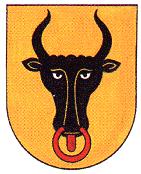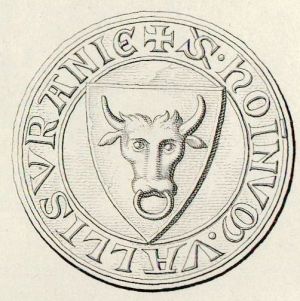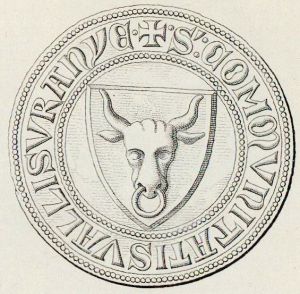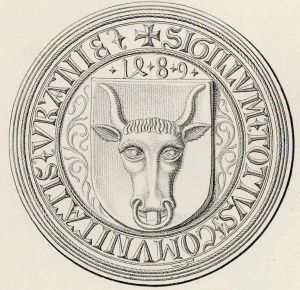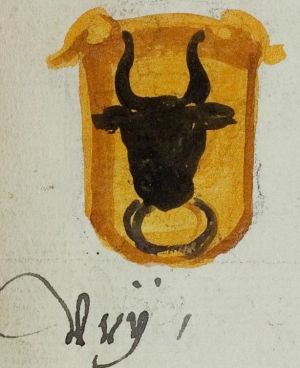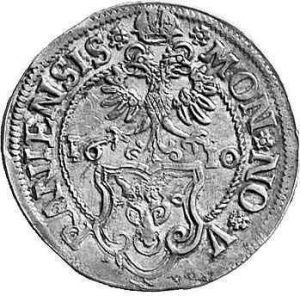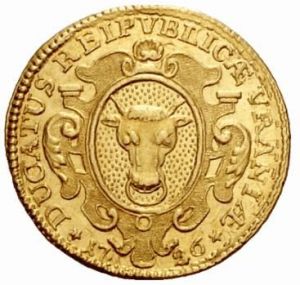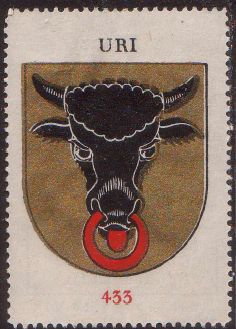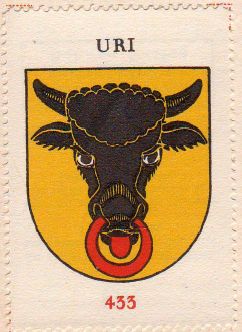Uri: Difference between revisions
Jump to navigation
Jump to search
Knorrepoes (talk | contribs) m (Text replacement - "{{media}}" to " {{ch1}} {{media1}}") |
Knorrepoes (talk | contribs) m (Text replacement - "{{ch}}↵" to "") |
||
| Line 1: | Line 1: | ||
'''URI''' | '''URI''' | ||
Revision as of 08:52, 30 December 2022
URI
Official blazon
Origin/meaning
The arms of Uri date from the early 13th century. The oldest known seal dates from 1249, but is probably older. It shows already a bull's head with a ring.
| The first seal (used from 1249) |
The second seal (used from 1258) |
| The third seal (used from 1353) |
The fourth seal (used from 1489) |
| The arms in a 16th century manuscript |
The arms in the Wapen- en Vlaggenboek van Gerrit Hesman (1708) |
The bull was probably a canting symbol. The oldest Germanic tribes to settle in the area named the area Ur (wilderness). The land was inhabited by a kind of bulls, known as Urochs (Bos primigenus), the ancestor of our present cows.
The arms of the canton thus have basically not changed since.
| The arms on a 1569 coin |
The arms on a 1610 coin |
| The arms on a 1726 coin |
The arms on a 1811 coin |
| |
Variations of the arms in the Kaffee Hag albums 1914-1960 |
|
Literature : Mühlmann, L. : Wappen und Fahnen der Schweiz, Bühler Verlag, Lengnau, 1977 and 1997.
